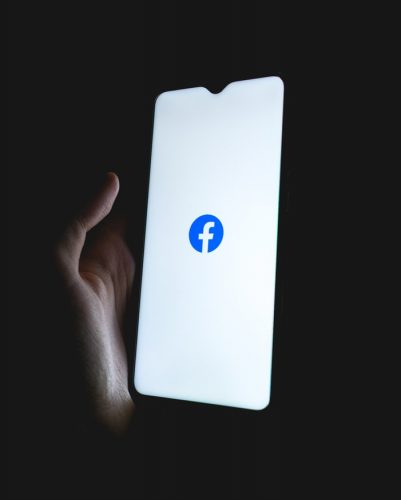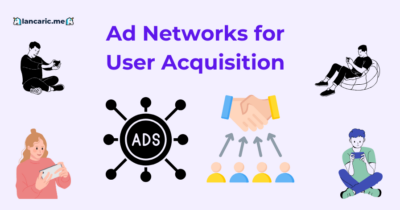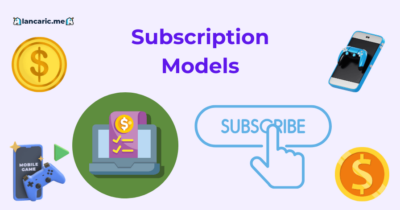
Facebook Lookalike Audiences: Pro Tips to Use for Mobile Games?
Facebook Lookalike Audiences enable mobile game developers to find new players who resemble their most engaged users. Facebook Lookalike Audience uses machine learning to analyze the behaviors, demographics, and interests of a game’s existing players, creating a target audience segment that optimizes Facebook ad reach. By configuring a Lookalike Audience, developers can adjust attributes like audience size and geographic location to align with their marketing goals, ensuring ads reach users with high potential for engagement. Through personalized targeting, Lookalike Audiences increase the likelihood of conversion, making them a valuable asset in mobile game advertising strategies. This approach not only enhances ad effectiveness but also helps optimize user acquisition costs by focusing on audiences similar to proven player profiles, ultimately boosting retention and driving long-term game growth.
What are Facebook Lookalike Audiences?
Facebook Lookalike Audiences are a targeting tool that helps advertisers reach new users who share similar traits and behaviors with an existing group of valuable customers.
Facebook Lookalike Audiences can be used to reach people who are similar to your current customers. They increase the probability of generating high-quality leads and offer more value on ad spend.
Lookalike Audiences are formed based on source audiences. You can create a source audience (also known as a seed audience) using data from:
- Customer Information. A newsletter subscription list or a customer file list. You can either upload a .txt or .csv file, or copy and paste your information.
- Website Visitors. To create a custom audience based on website visitors, you need to have Facebook pixel installed. With pixel, you create an audience of people who have visited your website, looked at a product page, completed a purchase, etc.
- App activity. With active Facebook SDK event tracking, app administrators can collect data on the people who have installed your app. There are 14 pre-defined events that can be tracked such as, “added to the basket” for retails apps, or “level achieved” for game apps.
- Engagement. An engagement audience is comprised of people who engaged with your content on Facebook or Instagram. Engagement events include: video, lead form, canvas and collection, Facebook page, Instagram business profile, and event.
- Offline activity. You can create a list of people who interacted with your business in person, by phone, or another offline channel.
Multiple Lookalike Audiences can be used at the same time for the same ad campaign. You can also pair Lookalike Audiences with other ad targeting parameters, such as age and gender or interests and behaviors.
How to use Facebook Lookalike Audiences?
To use Facebook Lookalike Audiences for mobile game advertisement, follow the below steps:
- Step 1: From the Facebook Ads Manager, go to Audiences.
- Step 2: Click Create audience and choose Lookalike Audience.
- Step 3: Choose your source audience. Remember, this will be a custom audience you’ve created from customer information, Pixel or app data, or fans of your page.
Note: Your source audiences needs to contain at least 100 people from the same country. - Step 4: You had to Select the countries or regions you would like to target. The countries you choose will determine where people in your Lookalike Audience are based, adding a geo-filter onto your Lookalike Audience, but Facebook recently changed this. There is no need to select country anymore.
- Step 5: Choose your desired audience size. Size is expressed on a scale of 1-10. Smaller numbers have high similarity and larger numbers have high reach. Facebook will provide you with an estimated reach for the size you choose.
Note: It can take between six and 24 hours for your Lookalike Audience to be finished, but you can still proceed to ad creation. - Step 6: Create your ad. Go to the Adverts Manager and click Tools, then Audiences, to see if your Lookalike Audience is ready. If it is, select it and click Create Advert.

What are the Effective Tips for Using Facebook Lookalike Audiences?
Following are the effective tips for using Facebook Lookalike Audiences:
1. Use the right source audience for your goals
Use the right source audience for your goals because different custom audiences match different goals.
For example, if your goal is to drive awareness of your business, a Lookalike Audience based on your Page Fans may be a good idea.
If your goal is to increase revene and ROAS, then a Lookalike Audience based on spenders will be a better choice.
2. Get creative with Custom Audiences
You can create custom audiences around a variety of parameters. Drill down on the options that best align with your campaign goals.
Ideas for Custom Audiences include:
ENGAGED:
- XY+ quests achieved in the game (in last XY days/months)
- XY+ times App launched in the last XY days/months
- engaged with high LVL – e.g. all players with level 100
- XYZ+ logins in 1 day – (in last XY days/months)
- 1, 3, 5 or even 10% lookalikes
PAYERS: (later down the road)
- top 250 payers (in certain month)
- 2+ special offers bought (in last XY days/months)
- XY soft currency bought (in last XY days/months)
- 1+/3+/5+ payments in last XY days/months
- whales
- engaged payers – players with 10/20/30+ logins in last XY days & made a purchase
- top 10% purchasers (in last XY days/months)
- single pay over xy UDS (in last XY days/months) – single payment over 20, 30, xy USD
3. Test your Lookalike Audience size
Test your Lookalike Audience size for different campaign goals.
Smaller audiences (1-5 on the scale) will most closely match your custom audience, whereas large audiences (6-10 on the scale) will increase your potential reach, but decrease the level of similarity with your custom audience. If you’re optimizing for similarity, aim for a smaller audience. For reach, go large.
4. Choose high-quality data
Choose high-quality data for better results.
Facebook recommends between 1,000 and 50,000 people. But an audience of 500 loyal customers with always perform better than an audience of 50,000 good, bad, and average customers.
Avoid broad audiences like “all app installers.” These large audiences will include great customers along with those who bounce after a short time.
Hone in on the metrics that determine your best customers. Often these are further down the conversion or engagement funnel.
5. Keep your audience list up-to-date
Keep your audience up-to-date. If you’re providing your own customer information, make sure it’s as current as possible. If you’re creating a custom audience with Facebook data, add date range parameters.
For example, if you’re adding a custom audience based on purchases, you may only want to target those who have made a purchase in the last 30 to 90 days.
Refresh lookalikes often – at least once a quarter. If you have enough data, once a month.
Photo: Unsplash
How does Facebook Lookalike Audience Help in User Acquisition for Mobile Game?
Facebook Lookalike Audiences help in user acquisition for mobile games by targeting new users who share similar traits and behaviors with an existing high-value audience. Through Facebook’s advanced machine learning algorithms, Lookalike Audiences identify users with comparable interests, demographics, and online behavior patterns, increasing the likelihood of attracting engaged and relevant users. Facebook user acquisition benefits significantly from Lookalike Audiences because it enables businesses to reach potential users who are more likely to interact with their content, make purchases, or engage in-app events, thus enhancing overall ad effectiveness and return on ad spend (ROAS). By mirroring the characteristics of an original audience, this feature helps marketers attract high-quality users who align closely with their brand’s goals.
Using Facebook Lookalike Audiences for user acquisition creates a streamlined approach to expanding the reach of campaigns to potential high-converting users. This method leverages data from Custom Audiences to pinpoint common traits and preferences, which helps advertisers fine-tune their targeting and improve user retention. When Lookalike Audiences are combined with Facebook’s powerful optimization tools, marketers can adjust ad delivery based on performance metrics, maximizing conversions and lowering cost per acquisition (CPA).








